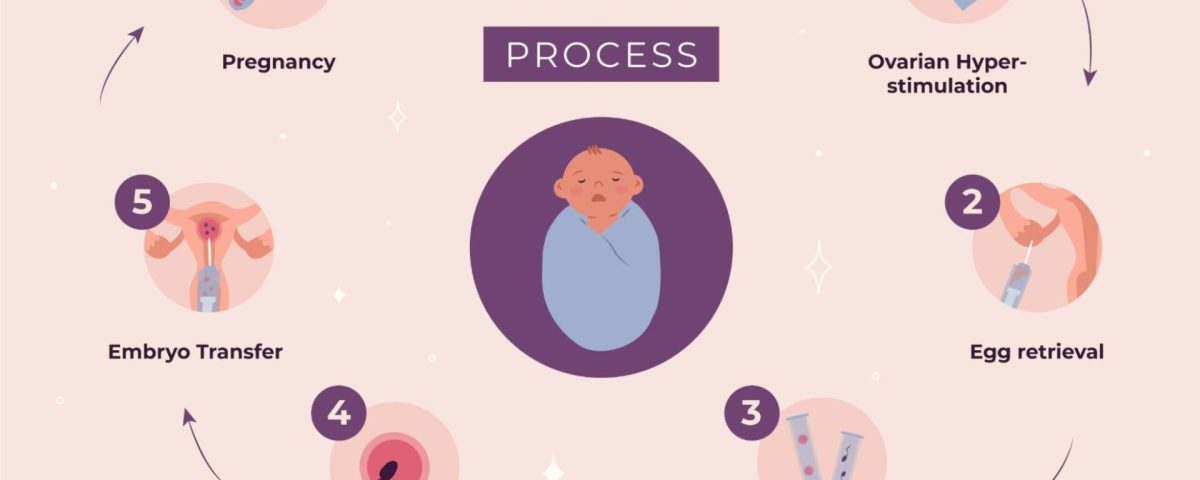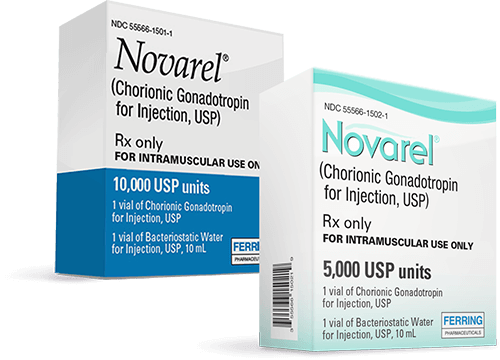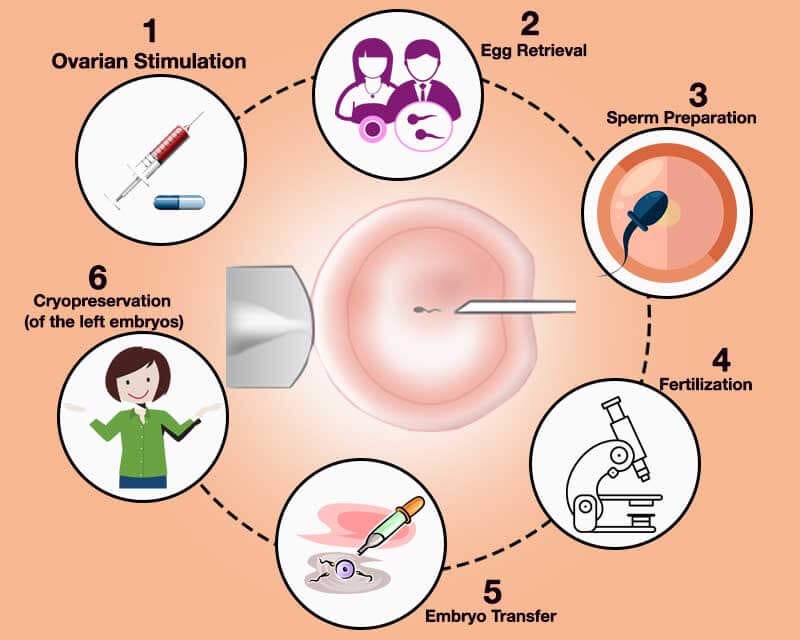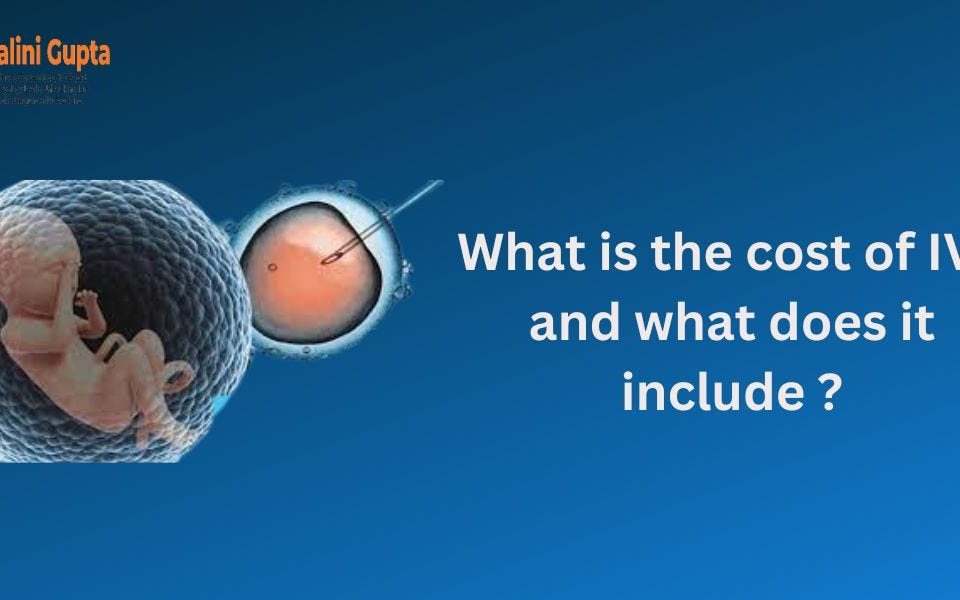
What Is the IVF Bill? Your Guide to Understanding This Game-Changing Legislation
April 22, 2025
What Is Mini IVF? Your Complete Guide to a Gentler Fertility Option
April 22, 2025What Is Reciprocal IVF? Your Guide to a Unique Path to Parenthood
Imagine two people in love, dreaming of starting a family together, but facing a twist: they’re both women, and biology doesn’t quite line up with their vision. That’s where reciprocal IVF steps in—a game-changer that’s helping same-sex female couples and others build the families they’ve always wanted. It’s a blend of science, teamwork, and a whole lot of heart. So, what exactly is reciprocal IVF, and how does it work? Let’s dive into this incredible journey, step by step, with all the details you need to know—plus some fresh insights you won’t find everywhere else.
Understanding Reciprocal IVF: The Basics
Reciprocal IVF, sometimes called “shared motherhood IVF,” is a special type of in vitro fertilization (IVF) designed for couples where both partners want to play a biological role in creating their baby. Picture this: one partner provides the eggs, and the other carries the pregnancy. It’s like a tag-team effort, with each person contributing something unique to bring their little one into the world.
In a nutshell, here’s how it goes: doctors retrieve eggs from one partner, fertilize them with donor sperm in a lab, and then transfer the resulting embryo into the other partner’s uterus. The result? A baby who’s biologically tied to one mom and carried by the other. It’s a beautiful way for both partners to feel deeply connected to the process, physically and emotionally.
This isn’t just about science—it’s about partnership. For many couples, it’s the chance to share the experience of parenthood in a way that feels equal and meaningful. And while it’s especially popular among lesbian couples, it’s also an option for others, like women facing fertility challenges or transgender individuals in certain cases.
How Reciprocal IVF Works: A Step-by-Step Breakdown
Curious about the nitty-gritty? Reciprocal IVF isn’t a one-day deal—it’s a carefully planned process that unfolds over weeks. Here’s what happens, broken down into simple steps:
Step 1: Getting Ready with Hormones
The partner donating the eggs starts with hormone injections to boost egg production. Normally, ovaries release one egg a month, but these meds encourage a bunch more to grow. It’s like giving the body a gentle nudge to step up its game. This lasts about 10-14 days, with regular checkups to see how things are progressing.
Step 2: Egg Retrieval
Once the eggs are ready, a doctor uses a tiny needle (don’t worry, you’re asleep for this!) to collect them from the ovaries. It’s a quick procedure—about 20-30 minutes—and you’re usually back home the same day. On average, they might retrieve 10-15 eggs, though it varies.
Step 3: Fertilization in the Lab
Next, those eggs meet donor sperm in a lab dish. Scientists watch as fertilization happens, turning eggs into embryos over a few days. It’s like a mini miracle under a microscope! After 3-5 days, the healthiest embryos are picked out for the next step.
Step 4: Embryo Transfer
Now it’s the other partner’s turn. The chosen embryo is placed into her uterus using a thin tube—no surgery needed. It’s a bit like planting a seed, hoping it’ll take root. This happens in a doctor’s office and takes just a few minutes.
Step 5: The Waiting Game
For the next 10-14 days, it’s all about waiting to see if the embryo implants and pregnancy begins. A blood test confirms the news. This part can feel like forever, but it’s the final stretch before the big reveal.
Pretty cool, right? Each step builds on the last, turning a shared dream into something real.
Who Can Benefit from Reciprocal IVF?
Reciprocal IVF isn’t just for one type of family—it’s a versatile option for different situations. Here’s who might consider it:
- Same-Sex Female Couples: This is the big one. If both partners want a biological role—one giving the eggs, the other carrying the baby—it’s a perfect fit.
- Women with Fertility Challenges: Maybe one partner can’t carry a pregnancy due to medical issues (like uterine problems), but her eggs are healthy. Her partner can step in as the gestational carrier.
- Transgender Individuals: For some trans men or nonbinary folks with ovaries and a uterus, reciprocal IVF could work with a partner, depending on their transition and goals.
- Couples Wanting a Shared Experience: Even if biology isn’t a barrier, some just love the idea of both being physically part of the process.
It’s not one-size-fits-all, though. Doctors look at things like age, egg quality, and uterine health to make sure it’s a good match. For example, women over 35 might face lower success rates with their eggs, so that’s something to chat about with a specialist.
Why Choose Reciprocal IVF? The Emotional and Practical Perks
So, why go this route? It’s more than just a medical procedure—it’s a deeply personal choice. Here’s what draws people in:
Emotional Connection
For many, the biggest perk is the bond it creates. One mom might say, “I gave the egg that became our son,” while the other says, “I carried him for nine months.” It’s a shared story that feels balanced and special. Research from the American Society for Reproductive Medicine (ASRM) shows couples often report higher satisfaction when both feel involved this way.
Flexibility
It’s practical, too. If one partner has great eggs but can’t carry a pregnancy (say, due to a hysterectomy), and the other has a healthy uterus but struggles with ovulation, reciprocal IVF makes it work. It’s like puzzle pieces fitting together.
Legal and Social Wins
In places where laws recognize both partners as parents (like many U.S. states), it can simplify things legally. Plus, it’s a powerful statement—two moms building a family their way, celebrated by communities worldwide.
But it’s not all rosy. It’s pricey—more on that later—and both partners need to be on board for the physical and emotional ride. Still, for those who choose it, the payoff can be life-changing.
The Costs and Challenges: What to Expect
Let’s talk real numbers. Reciprocal IVF isn’t cheap, and it comes with some hurdles. Here’s the scoop:
The Price Tag
In the U.S., one cycle can run $15,000-$20,000, including meds, egg retrieval, and embryo transfer. Add donor sperm ($500-$1,000 per vial) and extras like genetic testing, and you’re looking at $20,000-$30,000 total. Insurance might cover some (especially in states like New York or California with fertility mandates), but many pay out of pocket.
Physical Demands
The egg donor deals with hormone shots and a minor procedure. The carrier preps her uterus with meds and faces pregnancy. Both can feel exhausting—think mood swings, bloating, or fatigue. A 2023 study in Fertility and Sterility found about 30% of IVF patients report moderate stress during treatment.
Success Rates
It’s not a sure thing. Success depends on age and health. For women under 35, the live birth rate per cycle is around 40-50%, per the CDC’s 2022 data. Over 40? It drops to 10-20%. Sometimes it takes a few tries, which adds to the cost and emotional toll.
Tips to Navigate It
- ✔️ Budget Early: Save up or explore financing options like fertility loans.
- ✔️ Find Support: Join online groups (like on Reddit or X) for tips and encouragement.
- ❌ Don’t Rush: Take time to research clinics—success rates vary widely.
It’s a big commitment, but knowing what’s ahead helps you plan smarter.
A Fresh Take: What’s New in Reciprocal IVF?
Most articles cover the basics, but let’s dig into some under-the-radar updates and ideas shaking up reciprocal IVF in 2025. These are the game-changers you won’t find everywhere:
Tech Boosts Success
Clinics are now using AI to pick the best embryos. A 2024 study from Stanford showed AI-assisted embryo selection bumped success rates by 15% compared to traditional methods. It’s like having a super-smart assistant in the lab, spotting tiny details humans might miss.
Egg Freezing Twist
More couples are freezing eggs early, even years before reciprocal IVF. Why? It locks in younger, healthier eggs for later use. Data from the ASRM says eggs frozen before 35 have a 10-20% higher success rate than fresh eggs from older donors. It’s a proactive move gaining traction.
Mental Health Focus
Fertility clinics are stepping up with counseling built into the process. A 2023 survey by Resolve: The National Infertility Association found 60% of reciprocal IVF patients wanted more emotional support. Now, some offer free therapy sessions—because the journey’s tough, and you shouldn’t go it alone.
These trends show how reciprocal IVF is evolving, blending cutting-edge science with real human needs.
Real Stories: Reciprocal IVF in Action
Nothing beats hearing it from the source. Here are two quick stories from couples who’ve been there:
Sarah and Jamie’s Journey
Sarah, 32, had healthy eggs but a uterine condition. Jamie, 29, couldn’t ovulate well but had a strong uterus. They went for reciprocal IVF in 2023. “I loved knowing my eggs became our daughter, and Jamie got to feel her grow,” Sarah says. After one cycle ($22,000 total), their girl arrived in 2024.
Taylor and Alex’s Twist
Taylor froze her eggs at 28, planning ahead. Years later, at 34, she and Alex, 36, used them for reciprocal IVF. Alex carried the pregnancy. “It felt like we cheated time,” Taylor laughs. Their son was born in early 2025, proving the freezing strategy paid off.
These stories highlight how personal—and powerful—this path can be.
Interactive Quiz: Is Reciprocal IVF Right for You?
Wondering if this could work for you? Take this quick quiz (circle your answers mentally!):
- Do you and your partner both want a biological role in your baby?
- A) Yes, absolutely!
- B) One of us is fine either way.
- C) Not really, we’re exploring other options.
- Are you okay with a multi-step medical process?
- A) Yep, we’re ready for it.
- B) Maybe, if it’s not too intense.
- C) Nope, sounds overwhelming.
- Can you swing the cost (or find coverage)?
- A) We’ve got a plan.
- B) It’s tight, but we’ll figure it out.
- C) No way, too pricey.
Mostly A’s: Reciprocal IVF could be your match! Talk to a doctor.
Mostly B’s: It’s worth researching more—look into costs and support.
Mostly C’s: Other paths (like adoption) might suit you better.
Fun, right? It’s a starting point to spark some thoughts.
Busting Myths: What Reciprocal IVF Isn’t
There’s a lot of confusion out there. Let’s clear up a few biggies:
- Myth: It’s just regular IVF with a fancy name.
- Truth: Nope! Regular IVF uses one person’s eggs and uterus. Reciprocal splits the roles between partners.
- Myth: The baby only belongs to the egg donor biologically.
- Truth: Not quite. The carrier’s body shapes the pregnancy—epigenetics (how genes turn on/off) means she contributes, too.
- Myth: It’s only for rich people.
- Truth: It’s expensive, sure, but grants, insurance, and clinic discounts are making it more accessible.
Cutting through the noise helps you see the real picture.
The Science Behind It: What Research Says
Let’s geek out for a sec. Science backs up why reciprocal IVF works—and where it’s heading:
Success Stats
The CDC’s 2022 ART report pegs IVF success at 48% for women under 35 using fresh embryos. Reciprocal IVF aligns with this, though splitting roles can tweak outcomes based on each partner’s health. Age is the biggie—egg quality drops after 35, so younger donors often see better results.
Epigenetic Magic
A 2023 study in Nature found the gestational carrier influences the baby’s gene expression through the uterine environment. So, the carrier isn’t just a vessel—she’s shaping the baby’s development in subtle, amazing ways.
Future Frontiers
Researchers are testing “three-parent IVF” techniques, where mitochondrial DNA from a third donor boosts egg health. It’s not standard yet, but it could help older couples down the line. Stay tuned—science is always pushing the envelope.
This isn’t sci-fi—it’s real progress making dreams possible.
Planning Your Reciprocal IVF Journey: Practical Tips
Ready to take the plunge? Here’s how to get started, with advice you can actually use:
Step 1: Find the Right Clinic
Look for a fertility center with high success rates and experience with reciprocal IVF. Check the CDC’s ART database for stats—top clinics like CCRM or Shady Grove often lead the pack. Bonus points if they offer counseling or financial help.
Step 2: Pick a Sperm Donor
You’ll need donor sperm. Options range from known donors (a friend) to anonymous ones via sperm banks. Banks like California Cryobank let you filter for traits—height, education, even hobbies. Take your time; it’s a big choice.
Step 3: Prep Together
Both partners need medical checkups—egg quality for one, uterine health for the other. Start prenatals early, cut stress (yoga helps!), and sync your cycles with meds if needed. It’s teamwork from day one.
Step 4: Lean on Community
X posts from 2025 show couples raving about support groups. Search “reciprocal IVF journey” on social platforms for real-time tips. One user said, “Strangers online got me through the two-week wait—priceless.”
Checklist for Success
- ✔️ Research clinics and read reviews.
- ✔️ Budget for at least one cycle, plus a buffer.
- ✔️ Talk openly with your partner about roles and feelings.
- ❌ Don’t skip the legal stuff—get parental rights locked in.
It’s a marathon, not a sprint. Pace yourself, and you’ll be ready.
Unique Angle: The Cultural Shift Around Reciprocal IVF
Here’s something you won’t see in every article: reciprocal IVF is changing how we see family. In 2025, it’s not just a medical option—it’s a cultural moment. Shows like The L Word: Generation Q feature it, and celebs like cricketer Nat Sciver-Brunt (who used it in 2024) are normalizing it. On X, posts trend with hashtags like #SharedMotherhood, showing pride in this path.
Why’s this matter? It’s rewriting the script. Families aren’t just mom-dad-kid anymore—they’re whatever love and science can build. A 2024 Pew Research poll found 65% of Americans now support assisted reproduction for same-sex couples, up from 50% a decade ago. Reciprocal IVF is at the heart of that shift, proving biology doesn’t define parenthood—intention does.
Interactive Poll: What’s Your Take?
Let’s hear from you! Pick one (in your head or drop a comment somewhere):
- What excites you most about reciprocal IVF?
- A) Both partners being biologically involved.
- B) The tech making it possible.
- C) The way it redefines family.
- D) Not sure—it’s all new to me!
Your vote keeps this convo alive. What’s your gut say?
The Global Picture: Reciprocal IVF Around the World
It’s not just a U.S. thing—reciprocal IVF is global, but it varies:
- UK: The NHS sometimes covers it for medical need, not just same-sex couples. Costs are lower (£10,000-£15,000), per HFEA data.
- Australia: Popular and often insured, with clinics in Sydney leading the charge. Success rates mirror the U.S.
- Spain: A hotspot for fertility tourism—affordable and progressive laws draw international couples.
- India: Growing fast, but legal hurdles for same-sex couples slow it down.
Cultural attitudes shape access. In Japan, it’s rare due to stigma, while Sweden embraces it with state support. Where you are matters—check local laws and clinics.
What’s Next for Reciprocal IVF?
Peeking into the future, this field’s just getting started. Here’s what’s on the horizon:
- Cost Cuts: Startups are testing “mini-IVF” with fewer drugs, potentially dropping prices by 30%, per a 2024 Forbes report.
- Access Expansion: Advocacy groups like Family Equality are pushing for more insurance coverage—2025 could see big wins.
- Tech Leaps: Gene editing (like CRISPR) might one day tweak embryos for health, though it’s years off and ethically tricky.
The road ahead is exciting—and a little wild. Reciprocal IVF’s here to stay, and it’s only getting bigger.
Wrapping Up: Your Path to Shared Parenthood
Reciprocal IVF is more than a procedure—it’s a bridge to a dream. Whether you’re a couple craving that dual connection, or just curious about how it works, it’s a story of hope, science, and love. From the hormone shots to the first ultrasound, it’s a rollercoaster worth riding for many. And with new tech, shifting cultures, and real families paving the way, it’s clearer than ever: family is what you make it.
Got questions? Chat with a fertility doc, join a forum, or dig into the latest on X. Your journey’s yours to shape—reciprocal IVF might just be the key. What do you think—could this be your story someday?




